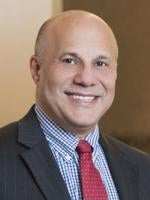What does it mean to “cure” a default in the context of a plan of reorganization? This question arises by virtue of section 1123(a)(5)(G) of the Bankruptcy Code, which requires that a plan provide adequate means for the plan’s implementation, including the “curing or waiving of any default.” On November 4, 2016, the Ninth Circuit Court of Appeals defined what it means to “cure” by holding that a debtor can only cure a contractual default under a plan of reorganization by complying with contractual post-default interest rate provisions.
In Pacifica L 51 LLC v. New Investments, Inc. (In re New Investments, Inc.), Case No. 13-36194, United States Court of Appeals for the Ninth Circuit, the debtor borrowed approximately $3 million from its lender in order to purchase a hotel property in Washington State. The promissory note, which was secured by a deed of trust, provided for an 8% non-default interest rate. The note also provided that in the event of default the interest rate would increase to 13%.
The debtor subsequently defaulted on the note and filed for Chapter 11 bankruptcy after the lender commenced non-judicial foreclosure proceedings. The debtor’s plan of reorganization proposed to cure the default under the note by selling the hotel to a third party and using the proceeds of the sale to pay the outstanding amount of the loan at the non-default interest rate. The lender objected to the plan, arguing that under the terms of the note it was entitled to be paid at the higher, post-default interest rate. Following the sale of the property, the bankruptcy court ordered that $100,000 of the proceeds be reserved for the lender’s attorney’s fees on appeal and that $670,000 be set aside as a disputed claim reserve for the lender.
The question presented by the lender’s appeal was the interplay between section 1123(a)(5)(G) and section 1123(d). As noted above, section 1123(a)(5)(G) requires a plan to provide adequate means to cure or waive any default. This section was interpreted by the Ninth Circuit in Great W. Bank & Tr. v. Entz-White Lumber & Supply, Inc. (In re Entz-White Lumber & Supply, Inc.), 850 F.2d 1338 (9th Cir. 1988), to permit a debtor to cure contractual defaults by paying the non-default interest rate. Under the court’s holding in Entz-White, a debtor whose plan proposed to cure a default could therefore avoid having to pay a higher, post-default interest rate called for in the underlying agreement.
Subsequent to the court’s ruling in Entz-White, Congress added subsection (d) to section 1123. This new subsection provided that notwithstanding subsection (a) of section 1123, “if it is proposed in a plan to cure a default, the amount necessary to cure the default shall be determined in accordance with the underlying agreement and applicable nonbankruptcy law.”
In its appeal, the lender argued that this new subsection (d) rendered the court’s decision in Entz-White void and that a debtor who proposes to cure a default must comply with the underlying contract and applicable nonbankruptcy law. In this case, this meant that the debtor was required to cure its default at the 13% default interest rate, and not at the non-default 8% interest rate. A divided panel from the Ninth Circuit agreed, holding that under section 1123(d) “a debtor cannot nullify a pre-existing obligation in a loan agreement to pay post-default interest solely by proposing a cure.” Instead, the debtor must look to the underlying contract and applicable nonbankruptcy law to determine what amount it needs to pay in order to cure its default. The court held that this interpretation was consistent with the intent of section 1123(d) because it holds the parties to the benefit of their bargain. Furthermore, it is consistent with the balance struck by the Bankruptcy Code between a debtor’s interest in reorganizing and the creditor’s interest in maximizing the value of the bankruptcy estate.
In her dissent, Circuit Judge Marsha S. Berzon criticized the majority’s holding as inconsistent with the legislative history of section 1123(d). Judge Berzon further argued that the holding was contrary to the binding precedent of the Entz-White opinion.
If the divided panel’s ruling stands, it will be harder for debtors, at least in the Ninth Circuit, to confirm a plan since any cure will now have to include payment of items such as a default rate of interest and associated penalties. In contrast, the leverage available to the lender has substantially increased given its right to demand payment in full, at a default rate of interest, before a default can be cured under a plan. It remains to be seen whether the debtor will seek en banc review. Review by the full Ninth Circuit may be appropriate since this issue has not been addressed by any of the other circuit courts of appeal.




 />i
/>i

